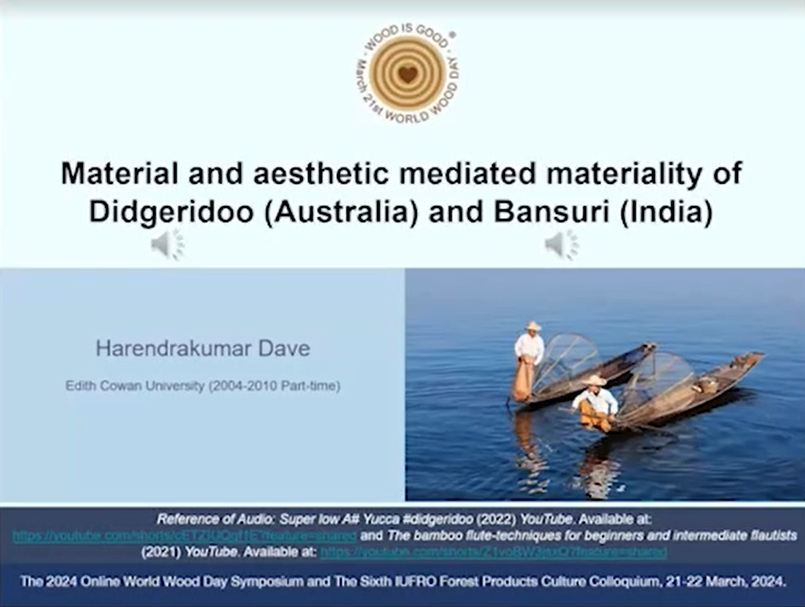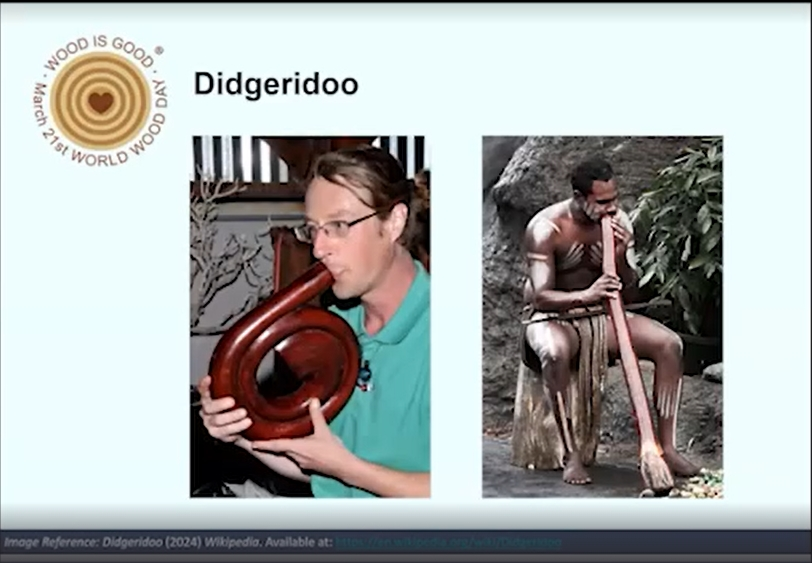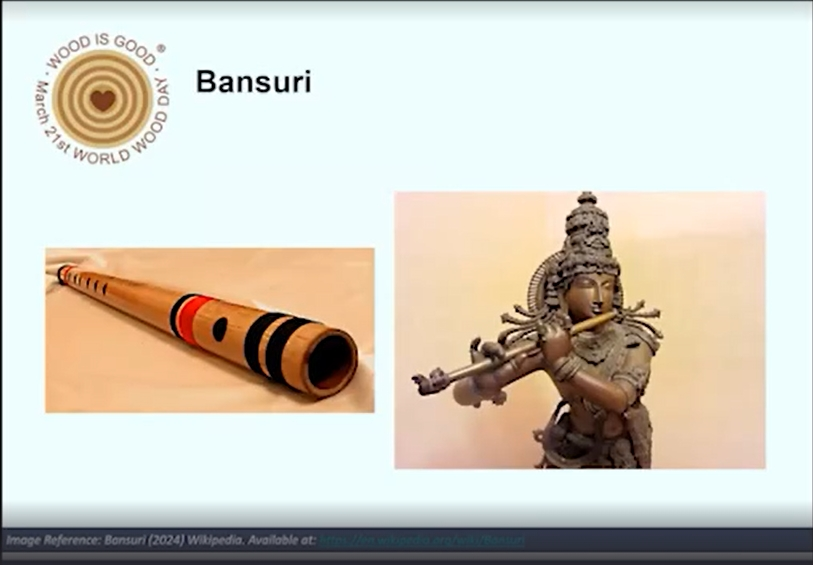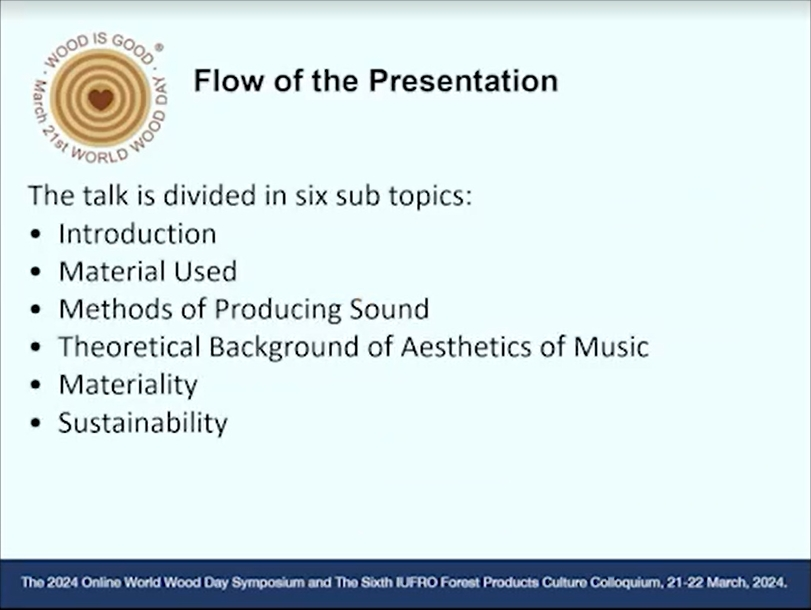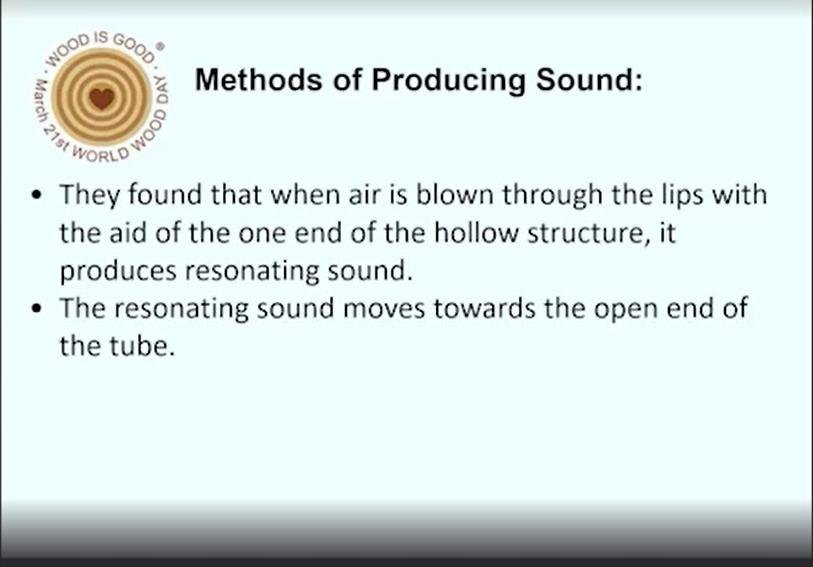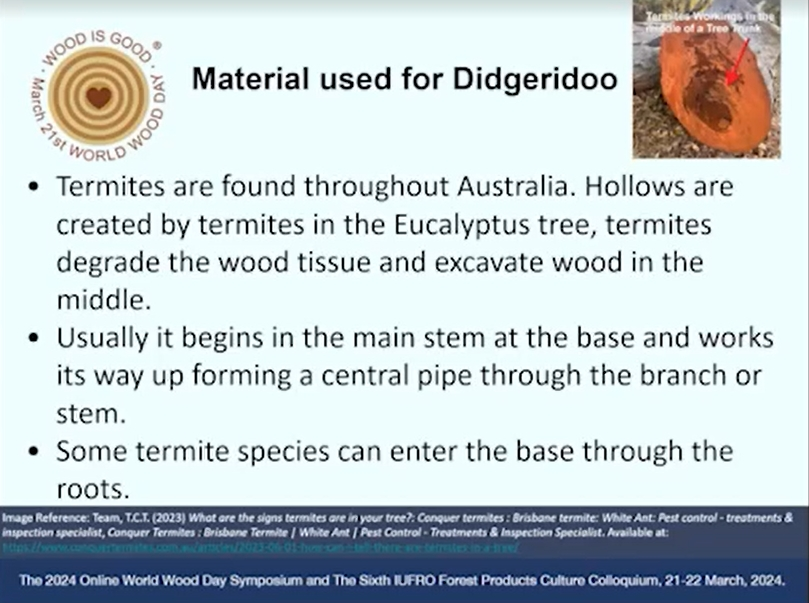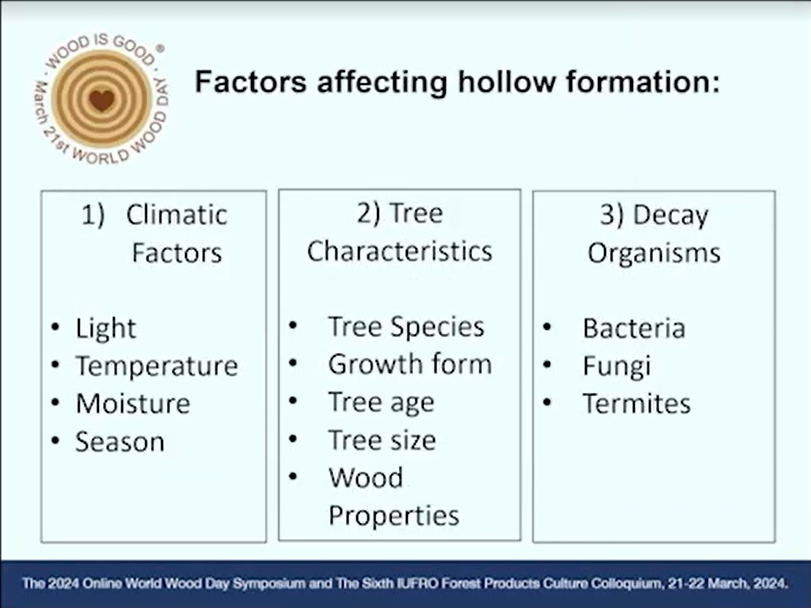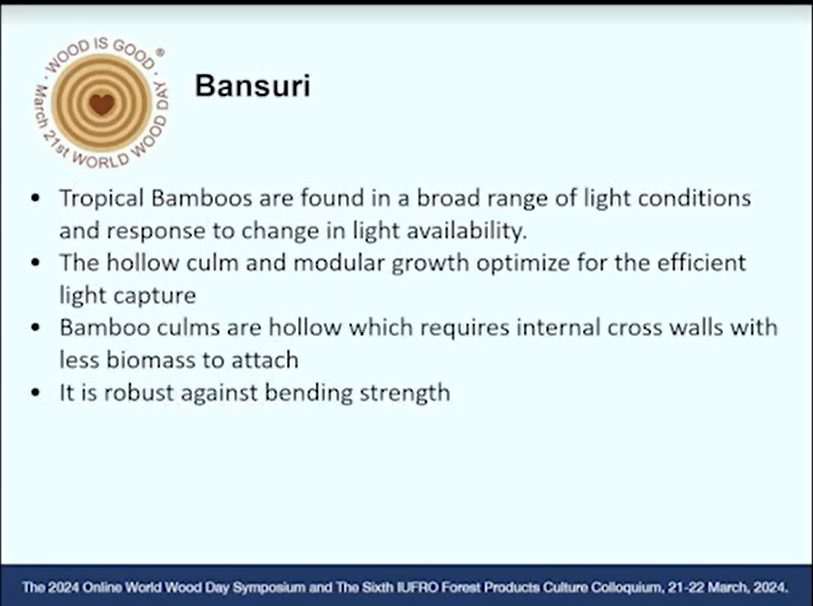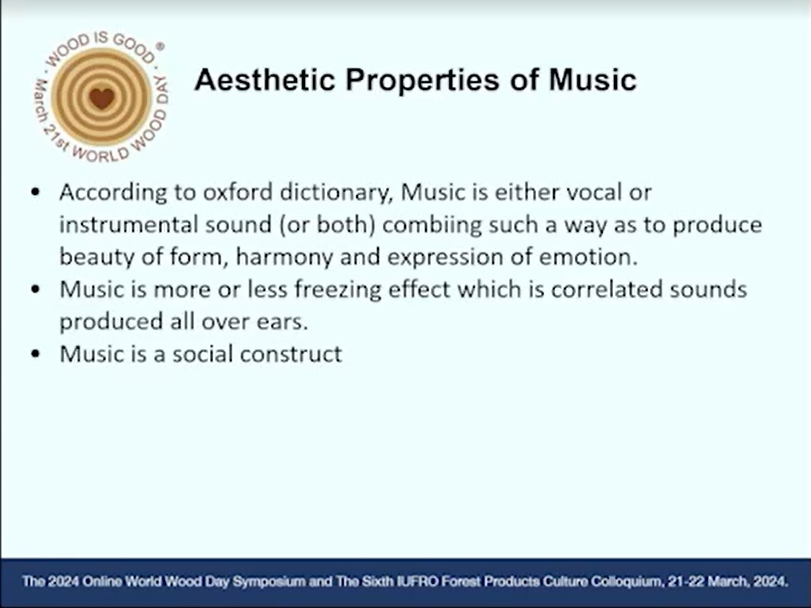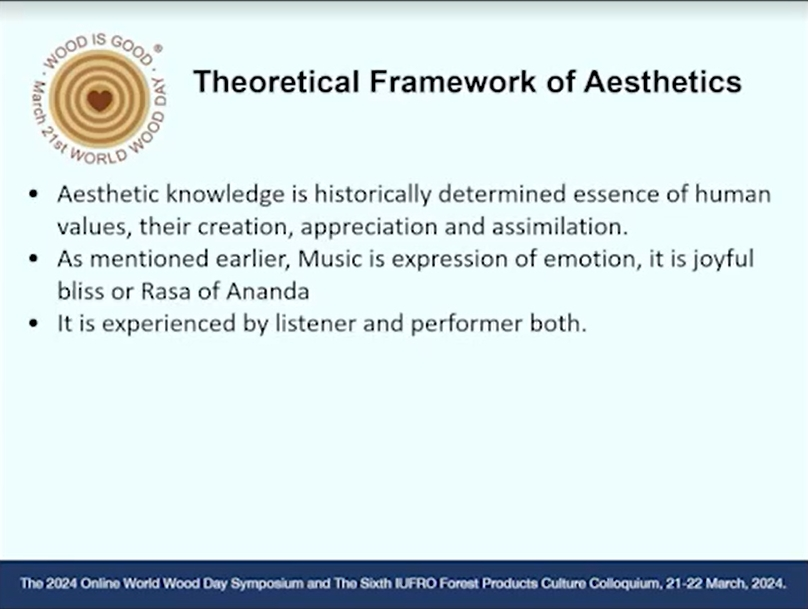会议名称:“2024世界木材日”研讨会暨第六届国际林联(IUFRO)林产品文化研究组讨论会
会议时间:2024年3月21-22日
报告嘉宾:Harendrakumar Dave
嘉宾单位:Chemical Educator and Self-directed Research Student
报告题目:Material and Aesthetic Mediated Materiality of Digeridoo (Australia) and Bansari (India)
报告摘要:
Literature survey reveals that only civilization explored their forest resources for their basic needs and also aesthetic attitude in creative activity. The aesthetic attitude can be seen from aborgines and early Indian (from India) people in their history of music, art and songs of religious ceremony and dance.
Use of windpipe, musical instrument is in use for at least 2000 years. What we can see today is the tangible material of the Digeridoo and Bansuri. What we cannot see and feel is the intangible value associated with it. Physical artifacts of corresponding time and place were used to find nearby hollow pipe of natural resources. Aborgines of North Australia found hollow pipe of natural resources of termite infected eukalyptics in the North Australian Forest. Only Indian people found bamboo from Himalayan Forest. Blowing air with the help of mouth in this hollow pipe generated resonating and created pleasing sound which became part of their material culture. Agentitive network was established and became the part of religious ceremonies. Still, today its use is increasing among Aborgines people of Australia and people in India.
However, the physical form of Digeridoo and Bansari have been changed. This is due to the effect of contribution of development in material science and understanding physics of it and creative activity of people in general. The aesthetic properties of sound generated by both instruments have increased demand in international market.
These links material properties ----- intangible materiality ---- sustainability
责任编辑:iwcs25H


 1,223
1,223